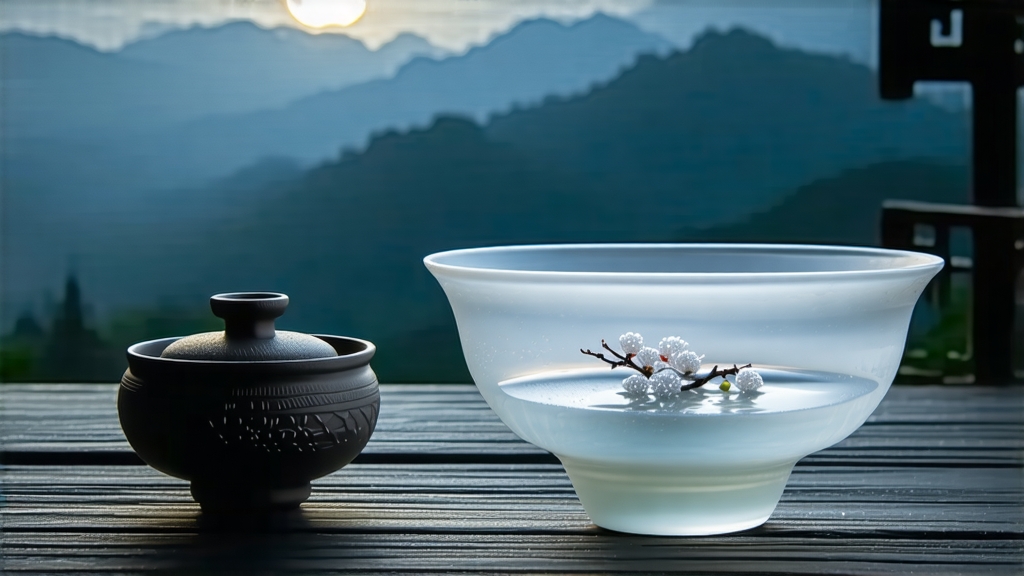
If green tea is the youthful heart of Chinese tea culture and pu-erh its meditative elder, then white tea is the quiet poet who arrives late to the party, stays only a moment, and leaves everyone speaking in whispers. Among the sparse family of white teas, none is more luminous, more subtly intoxicating, than Bai Hao Yin Zhen—literally “White Hair Silver Needle.” Gathered only in the brief window between early March and early April, when the air in northern Fujian still carries the chill of departing winter, Silver Needle is composed entirely of unopened buds still sheathed in fine white down. Those who encounter it for the first time often mistake the pale, needle-shaped buds for tiny slivers of moonlight that someone has miraculously persuaded to hold their shape.
Historical records first mention “white down tea” during the Song dynasty (960-1279), yet it remained a local curiosity until the late Qing, when European merchants discovered that the sweet, hay-like infusion traveled better than green tea and fetched dizzying prices in London and St. Petersburg. Silver Needle as a distinct grade was codified in 1796 by tea makers in Fuding who realized that if they plucked only the fattest buds and handled them with the same reverence accorded to imperial tribute teas, the result was a liquor so gentle it seemed to dissolve on the tongue yet so persistent that its honeyed fragrance lingered in an empty cup overnight. Thus a tea originally produced for domestic scholars and poets became one of the first Chinese teas to be internationally branded, decades before the concept of “branding” existed.
Strictly speaking, only two places may legally sell buds labeled “Bai Hao Yin Zhen”: Fuding and Zhenghe, two counties separated by a ridge of granite peaks in northeastern Fujian. Within each county micro-terroirs abound. Fuding’s buds, grown in red, sandy, slightly acidic soil, tend to be plumper and brew a liquor with a luminous apricot hue and a crisp, melon-sweet finish. Zhenghe’s buds, nurtured in darker, clay-loam soil at slightly higher elevation, are slimmer, yet they yield deeper, resinous notes of pine sap and dried longan. Purists will stage blind tastings the way Burgundy lovers compare Chambolle-Musigny with Gevrey-Chambertin, but both styles share the same genetic parent: the Fuding Da Bai cultivar, whose buds can reach 3.5 cm in length and whose down is so dense it looks dusted with powdered sugar.
The crafting of Silver Needle is disarmingly simple on paper and terrifyingly difficult in practice. No fixing, no rolling, no roasting—only withering and drying. Yet within those two verbs hides a universe of nuance. After dawn plucking, the buds are spread on bamboo trays woven from strips no wider than a chopstick. For the next thirty-six to forty-eight hours they rest in a sunless, airy pavilion while the master witherers coax moisture from the core of each bud by manipulating nothing more than airflow, relative humidity, and intuition. If the day turns too hot, buds may “burn,” developing off notes of cooked squash; if the night grows too humid, floral aromatics flatten into wet paper. When the moisture content drops to roughly 10 %, the buds are transferred to a charcoal-warm room where embers of hardwoods such of lychee or longan smolder at 40 °C, releasing a faint smoke that marries with the tea’s lactones to create the signature “milk-beneath-the-hay” aroma that connoisseurs recognize instantly. The entire process consumes four days, during which the buds lose 95 % of their weight and shrink into the silvery slivers that give the tea its name.
Western drinkers often ask whether white tea is “less caffeinated.” The answer is elegantly paradoxical: by dry weight Silver Needle rivals Assam in caffeine, but because each cup uses only two grams of leaf and steeps at low temperature, the delivered dose is gentler, more like a slow tide than a crashing wave. The same down that gives the buds their shimmer is rich in trichomes whose antioxidant capacity—measured as EGCG content—exceeds that of many green teas, yet the overall cup feels soothing rather than astringent. Traditional Chinese medicine classifies Silver Needle as cooling, ideal for clearing “liver heat” after late nights or excessive champagne, a pairing that has made it the unofficial recovery drink of Shanghai’s art-gallery circuit